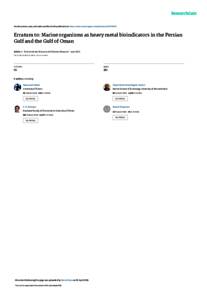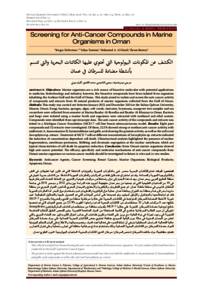Document
Erratum to Marine organisms as heavy metal bioindicators in the Persian Gulf and the Gulf of Oman.
Identifier
DOI: 10.1007/s11356-013-2295-4
Contributors
Malek, M., Author
Rashidinejad, R., Author
Nabavi, S., Author
Karbassi, A. R., Author
Ghayoumi, R., Author
Ghorbanzadeh-Zafarani, G., Author
Salehi, H., Author
Sures, B., Author
Publisher
Elsevier.
Gregorian
2014-02
Language
English
English abstract
In the present study, cadmium and lead concentrations were compared in barnacles, ghost shrimps, polychaetes, bivalves, and sediment from ten different locations along the intertidal zone of the Persian Gulf and the Gulf of Oman. The results revealed significant differences in the heavy metal concentrations between the organisms with barnacles showing, by far, the highest metal concentrations. The bioaccumulation factor of Cd in different animals follows this pattern with barnacles > bivalves > polychaetes > ghost shrimps, while the pattern for Pb was barnacles > polychaetes > bivalves > ghost shrimps. In most of the stations, sediments showed the lowest lead and cadmium concentrations. Therefore, it is concluded that barnacles with Pb concentrations between 0.17 and 2,016.1 μg/g and Cd concentrations ranging from 0.4 to 147.1 μg/g are the best organisms to be employed in monitoring programs designed to assess pollution with bioavailable metals in the Persian Gulf and the Gulf of Oman.
Member of
ISSN
0944-1344
Resource URL
Category
Journal articles


